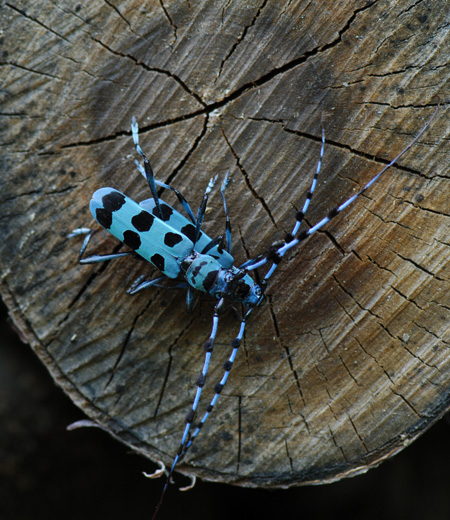Takao 599 museum has all kinds of animals inhabit in Mt. Takao in various ways of exhibitions such as seasonal wild plants preserved in acrylic and all kinds of animals specimens inhibits in Mt. Takao. On the "NATURE WALL," stuffed animals are displayed and shows the movie to introduce the dynamic nature of Mt. Takao.

Main region: Hokkaido, Honshu, Shikoku, and Kyushu.
Found in forests and woods from flatlands to mountains.
Japanese name Ruri-boshi-kamikiri literally meaning lazuline star cerambycidae was named because the body color is strong bluish light blue with three paired-black spots.
This species is known as a beautiful cerambycidae.
Some species have these black spots on left side and right part connected.
Antennae are blue and segments with black hairs.
Are seen from June and active during daytime.
In Mt. Takao, are often seen at fallen trees of fagus japonica maxim.
Also fly to quercus serrata for sap and flowers of clethra barbinervis.
Larvae also feed on woods of trees in fagaceae family that adults also feed on.
●Length about 18 to 30 mm
●Adult Flight Season June to about September
Found in forests and woods from flatlands to mountains.
Japanese name Ruri-boshi-kamikiri literally meaning lazuline star cerambycidae was named because the body color is strong bluish light blue with three paired-black spots.
This species is known as a beautiful cerambycidae.
Some species have these black spots on left side and right part connected.
Antennae are blue and segments with black hairs.
Are seen from June and active during daytime.
In Mt. Takao, are often seen at fallen trees of fagus japonica maxim.
Also fly to quercus serrata for sap and flowers of clethra barbinervis.
Larvae also feed on woods of trees in fagaceae family that adults also feed on.
●Length about 18 to 30 mm
●Adult Flight Season June to about September
